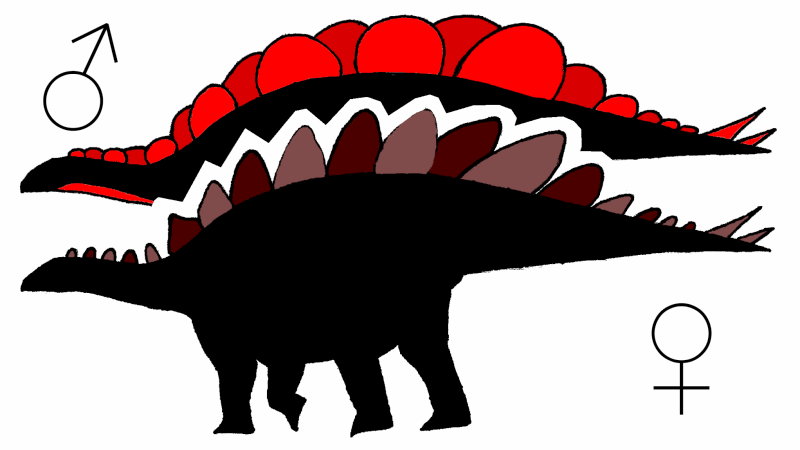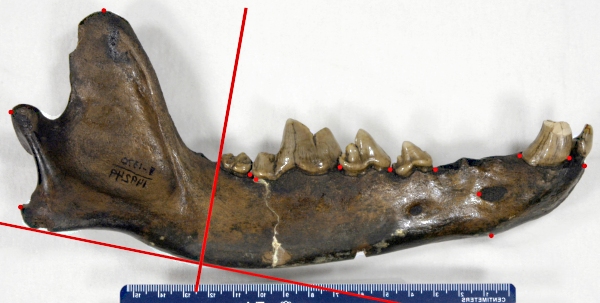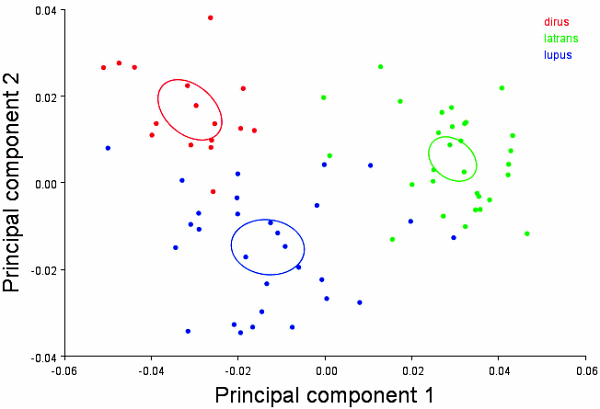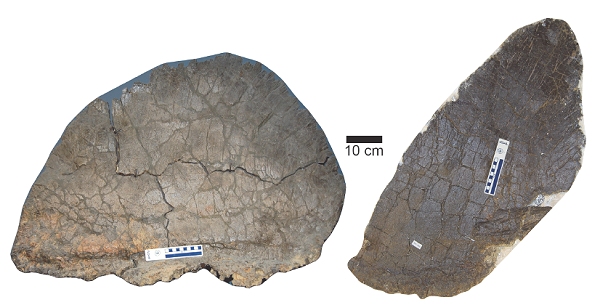
We all know and love Stegosaurus, the big dinosaurs with the spiked tails and the wonderful double-row of big bony plates on their spines. But when a child asks “Which is a boy and which is a girl?” the experts have no answer. For a long time they’ve said that dinosaurs probably didn’t differ by sex. But a young paleontologist has found that those plates are the key to Stegosaurus sex.
Dinosaurs have been an enduring puzzle since scientists described the first one nearly 200 years ago. Since the 1970s, dinosaur science has been in a vigorous ferment. We’re learning that dinosaurs were not the slow, stupid reptilian animals we used to picture. Now we’re told that dinosaurs were nimble, colorful, plumage-bearing, possibly warm-blooded creatures that are reminiscent of birds, their living descendents.
Living creatures very commonly differ between male and female, a property called sexual dimorphism. But it hasn’t been easy to tell whether dinosaurs were the same way. In a study just published in the open-access journal PLOS One, Evan Saitta used a computerized shape-testing technique to distinguish two types of Stegosaurus and argued that they represent the two sexes.
Saitta took advantage of an unusual opportunity, the discovery of a Stegosaurus “graveyard” in central Montana. Having numerous examples of the same species, Stegosaurus mjosi, allowed him to apply geometric morphometrics, a computer-based method of comparing shapes, to the bony plates along the spine that make these dinosaurs so recognizable.
Geometric morphometrics is a more objective way to compare shapes than having experts eyeball them and then argue about them. Here’s an example from the La Brea tar pits, where hundreds of prehistoric jawbones have been collected from three very similar canine species: coyotes, gray wolves, and the extinct dire wolf, Canis dirus. UC Berkeley researcher Eric Holt took a standard set of measurements from each fossil, as shown below, and put them all in a database.

He then had a computer perform a principal component analysis (PCA), which figures out the most efficient way to sort out a mess of complicated data. The technique generalizes something we do intuitively when, for instance, we sort out a bushel of mixed oranges, tangerines and mandarins even though each type of fruit may vary a lot in appearance. The PCA operation shows that the three dog species are easily separated by just two sets of numerical relationships—principal components—labeled 1 and 2.

When Saitta went through this exercise with 40 Stegosaurus plates, their shapes neatly fell into a Mutt-and-Jeff pattern of two groups. One is wide and rounded, the other is narrow and tall.

The next question is whether this difference is sex-related or due to something else: (1) maybe individuals varied a lot; (2) maybe both types occurred on the same animal; (3) maybe they represent different species; and (4) maybe one is a juvenile form of the other.